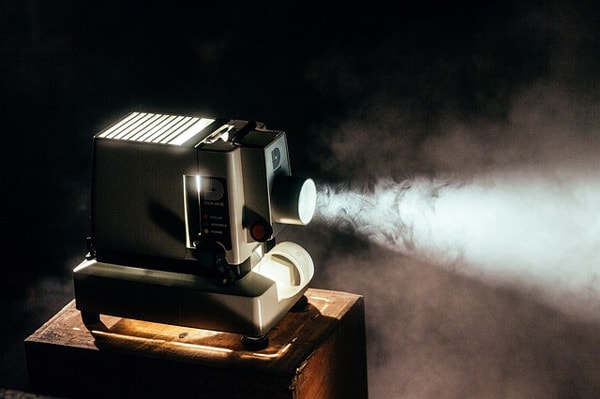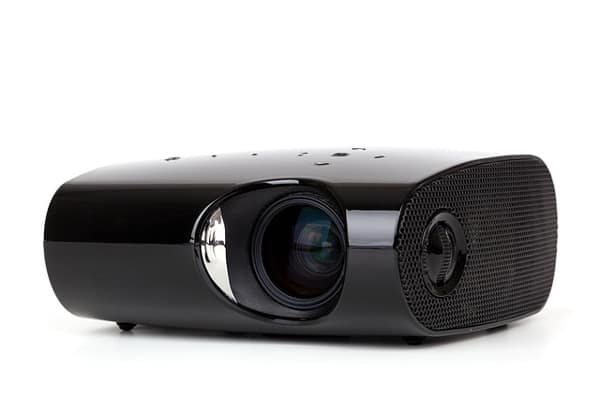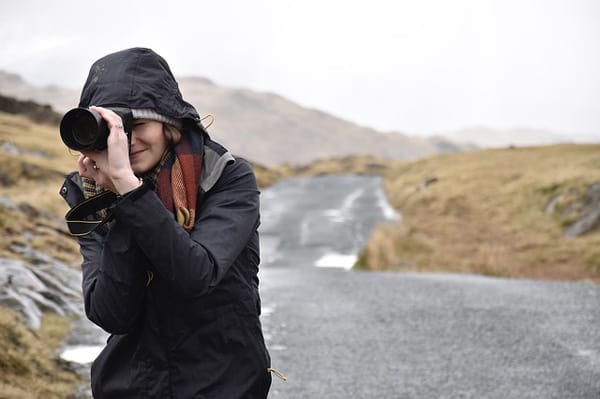If you are reading this, it is likely that you take copious amounts of photographs. A few years ago, families would gather around their Kodak carousel slide projector and look at 35 mm slides of family vacations. There was something that was almost magical about seeing images on the big screen in living color. Really, back then, a homemade slideshow was the only experience that most people had seeing something on a big screen outside of the movie theater. It was a great way for families to remember special events and special times.

The digital revolution changed what people expect when it comes to how photographs should be experienced.
Now, many people think of photographs as being projected on smaller screens, like computers, cell phones, or tablets. Many people today do not realize that high resolution digital projectors can offer the same types of experiences that Kodak slide projectors did in the past. The results that you get have to do as much with the photographs you take as with the projector you use.

Sizing Images
Projectors come in a range of resolutions. Common resolutions are 1024 x 768 pixels or 1400 x 1050 pixels. These resolutions share a 4:3 common ratio. On occasion you may come across a projector that has 1920 x 1080 or 1820 x 1200 pixels. Regardless of the dimensions, the first number represents the horizontal dimension.
If you are not using your own projector and you don’t know the resolution of the projector, you want to size your images for the highest projector resolution you may find. Horizontal images should sit at 1900 pixels across. Vertical images should sit at 1200 pixels high. If you have a square image, you want it to be 1200 pixels square. In all of these circumstances, if the size of the image is little bit larger, that is fine.
A number of people have purchased 4K projectors. These have a resolution of 3840 x 2160. You will need to read projector reviews and prepare your images accordingly.
Color Accuracy
You want to do your photographs justice. You want their projected colors to be as true to the original colors as possible. There is a difference in the way that different types of projectors handle color accuracy. The three primary projector technologies are: DLP, LCoS, and LCD.
DLP is known for having strong contrast but difficulty displaying colors like yellow accurately.
LCD projectors do a better job at displaying color accuracy. But there are only a few LCD projectors that have a contrast level on par with what you get with a DLP camera. LCD projectors that can accomplish this are usually geared toward home cinema as opposed to photography.
LCoS projectors are a hybrid of LCD and DLP projectors. They’re going to give you the best color contrast mix. They’re also going to cost a little bit more, but if you’re concerned about color accuracy and if your budget can allow it, they are worth the price.
Of course, color accuracy goes beyond the technology powering the projector. Digital projectors have technology systems that can transform color during projection. This means that in some cases cheaper projectors will do a better job with your photographs than more expensive ones.
sRGB is the base recommended standard. RAC.709 or 2020 have an improved color gamut. However, you cannot rely solely on what the projectors spec sheet says as this is not a true to life explanation of how the projector will work in real life.
If you are experienced with color management, our recommendation is that you save images in sRGB color space. This is because the majority of the projectors you are going to use will have an sRGB preset, which will be a close fit for this color space. If you are saving your files in Photoshop, remember to use the Convert to Profile as opposed to Assigned Profile for the best color.

You want a combination of optical technology, color performance, and brightness for the best results.
File Format and Compression
Problems can come up if the images you display are too large. If you are presenting images in a slideshow, large images may slow the slideshow software down. This specifically applies to large TIFFs that have been saved at maximum quality.
If you are saving your images for projection, it is recommended that you save them in the JPEG format. As you save each image on Photoshop, we recommend you save them as 60 percent, also known as the lowest “High” setting Photoshop offers. This is going to give you a decent compromise between size and quality.
Take Good Photographs
You’ve heard the saying, “Garbage in, garbage out.” This definitely applies to digital photographs. You can’t have a spectacular display without spectacular photos.
Use the Rule of Thirds. The rule of thirds causes the eyes to wander the frame, making it more pleasurable to the eyes. Imagine your images are divided by four lines. Two horizontal and two vertical. These will create nine even squares. Certain images are going to look great with the focus on the center square. Others will look great with the focal point being a little off center at one of the intersecting points.
Avoid Camera Shake. Learn to hold your camera correctly. Put one hand around the body and of the other one around the lens while holding the camera close to your body for support. Use the correct shutter speed for your camera’s lens focal length. A shutter speed that’s too slow will cause unintentional movement to make your entire photo blurry.

Learn the Exposure Triangle. The exposure triangle is made up of three basic parts. Aperture, ISO, and shutter speed. You should learn about these three controls and learn how they relate to each other. When you adjust one, you will likely need to adjust the others to get the result that you want. Many cameras come with an auto mode that takes care of a lot of this balance for you. However, you will likely not get the results that you want.
You can make spectacular photo displays using a modest digital camera and a modest projector. The key is having a solid understanding of the basics. Mastering composition and light and understanding resolution are keys to having a spectacular photo display.
I would love to hear from you. What tips can you offer on making the most of a projector photo display? Let me know in the comments section below.








